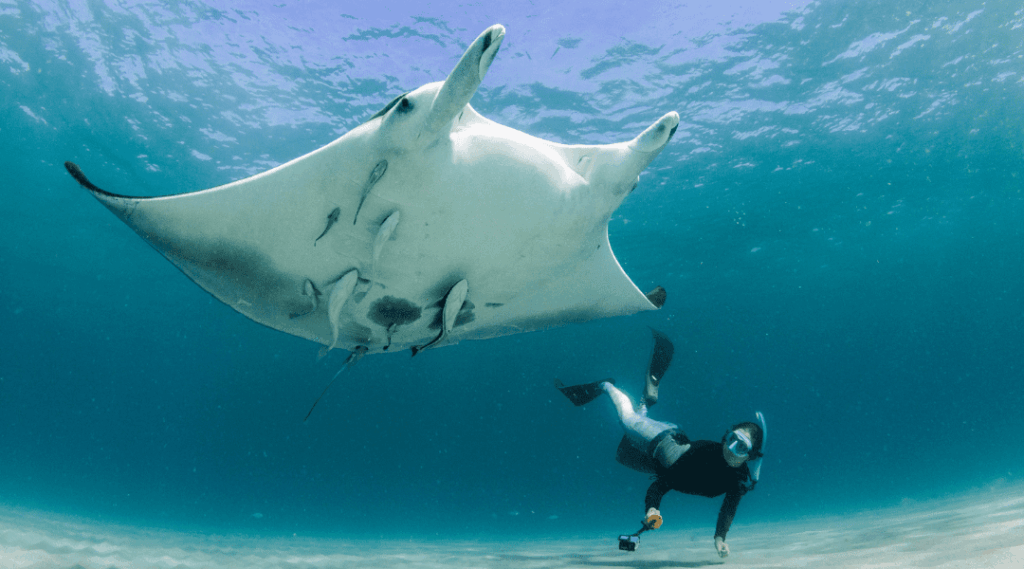A New Manta in the Atlantic: Meet Mobula yarae
BY: Corinne Leard
The ocean holds many secrets — and sometimes it takes decades to uncover them. Marine scientists have now officially recognized a new manta ray species, Mobula yarae, found only in Atlantic waters. It is now the third recognized species of manta ray. Researchers had suspected it existed for over 15 years, and now, after years of intensive study, it has finally been confirmed.
A GROUNDBREAKING DISCOVERY
Back in 2009, Marine Megafauna Foundation co-founder Dr. Andrea Marshall predicted that a third manta ray species might exist based on years of research looking into the subtle differences between manta species. So when she spotted an unusual individual off Mexico that didn’t look like either of the known species — reef manta or oceanic manta — she knew this discovery could be something major. When a naturally deceased ray washed up in Florida in 2017, it provided the rare opportunity to take genetic samples and detailed measurements and complete the formal description of Mobula yarae as a distinct species. In July 2025, the research was finally published confirming the new species, which lives in tropical and subtropical waters from the eastern United States to Brazil, including the Gulf of Mexico and Caribbean Sea.

NEW MANTA HIDING IN PLAIN SIGHT
The newly discovered Atlantic manta ray closely resembles other known manta species, which helps explain how it went unnoticed for so long. It shares the fin shape and black dorsal coloration of the oceanic manta, along with the lighter face and belly spot patterns typically seen in reef mantas. But one feature sets it apart: distinctive V-shaped shoulder patches unique to this species. Recognizing this unusual mix of traits was the key to identifying it as something entirely new. Scientists believe this manta likely diverged from the oceanic manta relatively recently — offering valuable insight into how marine species diversify and what drives ocean biodiversity.
FROM RECOGNITION TO PROTECTION
Identifying new species is more than an exciting academic achievement — it’s vital for conservation. Mobula yarae inhabits coastal and open-water habitats from the eastern U.S. to Brazil, including the Gulf of Mexico and Caribbean Sea. Understanding its range, behavior, and threats is key to designing effective conservation measures.
Like other mantas, this species is vulnerable to threats like being accidentally caught in fishing gear, boat strikes, entanglement, and pollution. And because it looks so much like other mantas, it’s often been overlooked. Now that it’s officially named, scientists can finally focus on protecting it.

Oceana campaigns to address many of the threats that manta rays face and to protect marine life around the world.
The Marine Megafauna Foundation will also continue studying M. yarae populations throughout much of their range, working with international partners to better understand the species, and collaborate with range countries to develop appropriate conservation measures for the newly recognized Atlantic manta ray species. You can read their full press release here.



